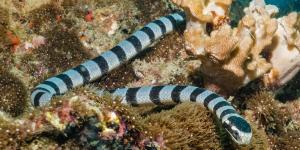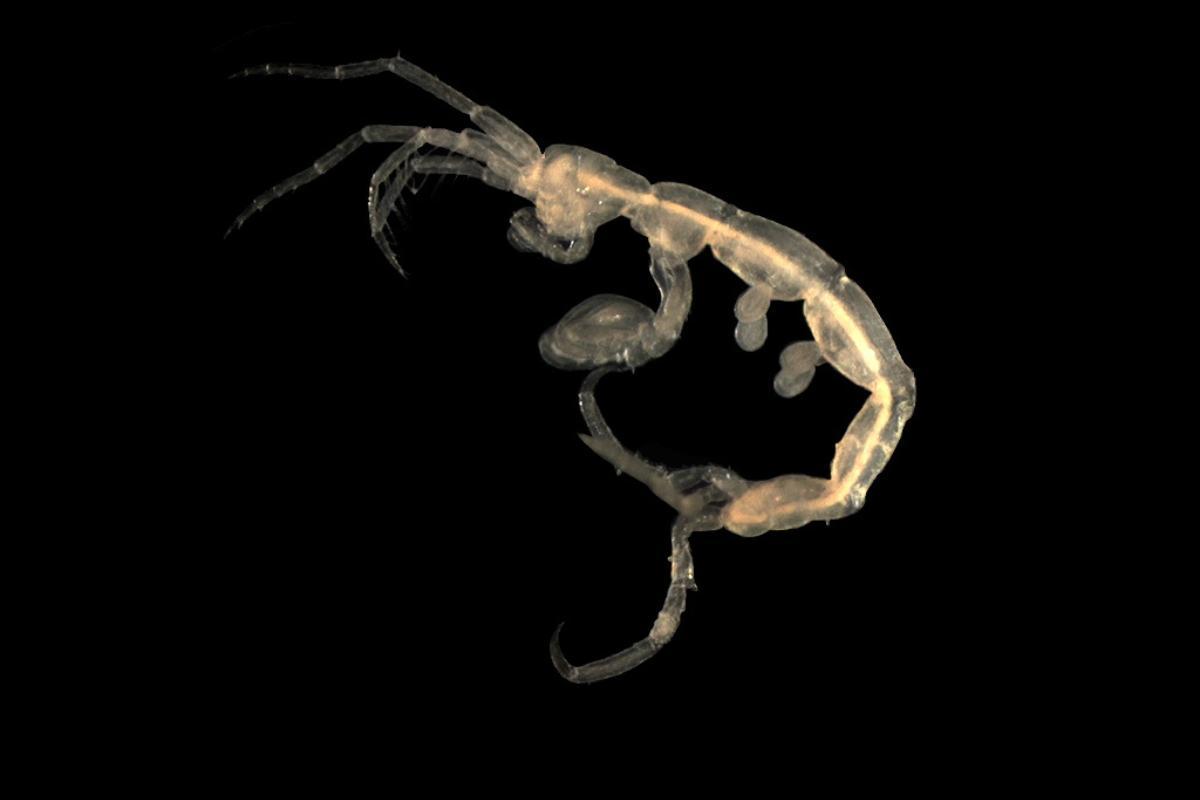What Are Amphipods? - Characteristics and Types


Amphipods are members of the order Amphipoda, small crustaceans that are characterized by having no carapace. They have a global distribution in the world's aquatic environments. Amphipods have been evolving and adapting into various forms of life. We are going to see that they can inhabit different ecosystems, from marine, freshwater and even terrestrial. They can be free-living or parasitic in terms of ecological role. They resemble insects of the sea. While they are not closely related to insects, they are arthropods, meaning they share certain key characteristics.
At thedailyECO, we explain more about these characteristics by asking what are amphipods? In addition to explaining what they are, we see types of amphipod species from around the world.
What are amphipods?
Amphipods constitute one of the most diversified animal orders, along with decapods and copepods. This is most likely due to their ability to adapt to various environments. These are often environments in which many other animals struggle to survive. There are about 10 thousand species of known amphipod around the world, although new species are routinely being discovered.
While the basic definition of amphipod is an arthropod of the order Amphipoda, this does not provide much in terms of understanding what they are like. For this reason, we share the following characteristics of amphipods:
- Size: they are very small in size and do not exceed 10 mm. Their body is laterally compressed.
- Carapace: they do not have an external shell that covers them. Instead, they have chitin scales for protection.
- Eyes: they have a pair of simple eyes and, unlike other crustaceans, they are sessile and not pedunculated.
- Body: the body of amphipods is segmented into three parts, the cephalon, pereion and pleon. They also have appendages throughout the body that fulfill the functions of locomotion, feeding, reproduction and respiration.
- Cephalon: the ventral part where the mouthparts, eyes and antennae are grouped.
- Pereion: has 7 segments with pairs of legs called pereiopods, some of which carry gills. The first segment of the pereion fused with the cephalon, so its appendages transformed into maxillipeds with a trophic function.
- Pleon: has 6 pairs of appendages. The first 3 are called pleopods and the last 3 are uropods. At the posterior end there is the well-differentiated telson.
- Ecosystem role: they perform very important ecological functions in ecosystems. They allow the flow of matter and energy between food chains, providing food for whales, fish, birds and decapod crustaceans.
- As food: they have a high nutritional value and are easy to breed in captivity. For this reason, their large-scale production is being evaluated for use as an alternative food in aquaculture.
- Bioindicator species: in ecotoxicological and environmental impact studies since they are very sensitive to pollution. Learn more about the role of bioindicators in their ecosystem by finding out what are indicator species?

Types of amphipods
The order of amphipods is subdivided into 5 suborders, they are:
- Hyperiidea
- Ingolellidea
- Caprellidae
- Gammaridea
- Corophiidae
The last two contain 92% of the amphipod species. Let's look at some specific examples of amphipod species:
- Stenothoe boloceropsis: an amphipod that has been discovered living on a sea anemone (Boloceropsis platei).
- Cyamidae sp.: also known as whale lice. They are ectoparasites of cetaceans.
- Eurythenes Atacamensis: known as a giant scavenging amphipod, it was discovered not long ago in the Atacama Trench, to which it is endemic. It is believed that it also consumes microplastic. Take a look at the life in another deep water area with our article on the animals of the Mariana Trench.
- Aristias linnaei: another species recently discovered 50 meters deep in the Errázuriz Canal of Aysén. Although not much is known yet, it is believed to be a commensal of other organisms such as sea sponges or corals.
- Phronima sedentaria: this amphipod often uses salps (types of tunicate) for shelter. The female has a peculiar way of caring for her young. Instead of laying them in their environment, she places her eggs inside other organisms.

Where do amphipods live?
We find amphipods distributed throughout the world. Some are free-living and others practice parasitism, meaning they live on a host species. In general, amphipods can live in:
- Marine ecosystems
- Freshwater waters
- Brackish waters
- Terrestrial ecosystems
Although amphipods can live in marine ecosystems, this does not mean that all parts of the ocean are the same. They can live in the intertidal or abyssal zone, but they can also be pelagic and benthic organisms. The majority of amphipod organisms are marine, benthic and free-living. During the night, some species of benthic amphipods migrate vertically upward for dietary or reproductive reasons. Learn about the types of pelagic fish in our related guide.
A great diversity of forms adapted to different environments has emerged. For example, some live partially or completely buried in soft bottoms of sand or mud. Others live in rougher substrates such as rock, shells and coral reefs. There are species that build tunnels with mud, shell fragments or self-secreted material and live within them.
Amphipods that live in continental waters can be found on algae and plants in streams, rivers or lagoons and in groundwater. A few were found in hydrothermal vents and inside decomposing marine mammals.
Several cases have been recorded where amphipods live associated with other organisms, either as commensal organisms or parasites. The first case has been seen with anemones, jellyfish, sponges, ascidians, mollusks and echinoderms. Others have evolved as ectoparasites, using fish and sea turtles as hosts, for example.
Discover more about another type of aquatic crustacean with our article on what are copepods?
What do amphipods eat?
Just as there is a diversity of life forms within amphipods, there is also a diversity in the types of amphipod diet. Let's see what they are:
- Filters: the most common type of feeding in amphipods.
- Browsers: they scrape the surfaces of shells, algae and rocks to obtain food.
- Scavengers: especially the species found in the depths and those that belong to the Lysianassidae family.
- Predators: species of the Phoxocephalidae family feed on larvae and juveniles of copepods, nematodes and annelids. While many pelagic habits feed on zooplankton.
- Detritivores: they feed on detritus or decomposing organic matter.
- Parasites : They feed on the host's tissues.
Learn more about another type of detritivore animal that can live in the ocean with our article on what are tardigrades?
How do amphipods reproduce?
No we discover how amphipod reproduce. Amphipods are dioecious animals, meaning there are both males and females and that most species reproduce only once in their lives.
During the reproductive period, the female attracts the male by means of pheromones. He clings to her by means of gnathopods in a dorsal or lateral position. Mating can occur before the female molts (and can be fertilized) or just when she is about to oocyte.
Fertilization is internal and the male deposits the sperm in the incubation chamber of the female, which is in a ventral position. The fertilized oocytes will remain in the female's pouch until the eggs hatch. Even the juveniles will remain there until they are completely independent. Embryonic development is direct since they lack larval stages.
Parental care can continue even in the juvenile state. Their parents keep them in tubes, caves and even on the mother's body.
Discover more about one of the amphipod's habitats with our article on the plants and animals of kelp forests.
If you want to read similar articles to What Are Amphipods? - Characteristics and Types, we recommend you visit our Wild animals category.
- Chiesa, I. L., & Alonso, G. M. (2014). Amphipods Gammaridea and Corophiidea. Retrieved from: https://www.researchgate.net/publication/311486887_Anfipodos_Gammaridea_y_Corophiidea
- Häussermann, V., & Vader, W. (2015). A new Stenothoe species (Crustacea: Amphipoda: Stenothoidae) living on Boloceropsis platei (Anthozoa: Actiniaria) from Chilean Patagonia. Retrieved from: https://www.researchgate.net/publication/276151222_A_new_Stenothoe_species_Crustacea_Amphipoda_Stenothoidae_living_on_Boloceropsis_platei_Anthozoa_Actiniaria_from_Chilean_Patagonia
- National Museum of Natural History. (2015). A new crustacean discovered in Aysén. Retrieved from: https://www.mnhn.gob.cl/noticias/un-nuevo-crustaceo-despósito-en-aysen
- National Museum of Natural History. (2015). A brief introduction to amphipods. Retrieved from: https://www.mnhn.gob.cl/noticias/una-breve-introduccion-los-anfipodos
- National Museum of Natural History. (2021). The scavenger amphipod from the Atacama Trench now has a name! Retrieved from: https://www.mnhn.gob.cl/noticias/el-anfipodo-carronero-de-la-fosa-de-atacama-ya-tiene-nombre







